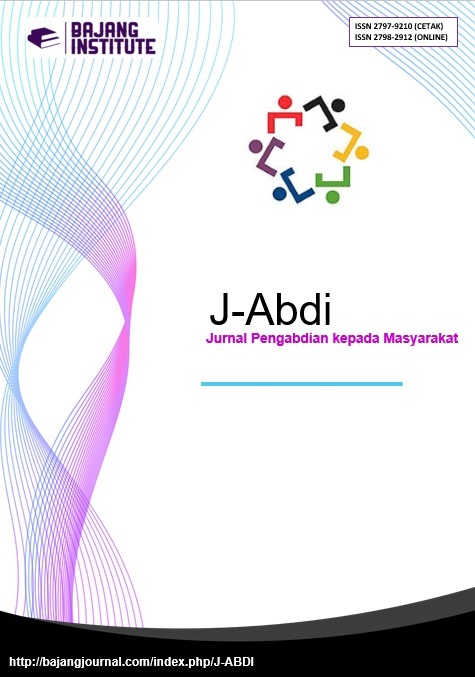PENDUKUNG PEREKONOMIAN MASYARAKAT MELALUI PEMANFAATAN BANK SAMPAH
DOI:
https://doi.org/10.53625/jabdi.v1i1.179Keywords:
Garbage, Garbage Management, Environmental Accounting.Abstract
In human life, garbage becomes a phenomenon that will always exist as long as humans live and move, therefore garbage needs to be handled seriously and intersively. Garbage in people's lives can have negative and positive consequences, where the positive impact is that it can become manure, as a livelihood for scavengers, as well as as one of the elements in the manufacture of energy, or fuel. While the negative impact is that garbage can cause the spread of disease, as well as ecological damage, the number of floods due to garbage accumulation in rivers close to the population and others. Garbage can be managed by involving all parties, such as the community, government, and other institutions. Garbage can also be reduced in people's lives by composting, replacing burning, reusing, recycling.
References
Afriani, I. P., Fadilla, N. M. and Ihsan, T. (2019) ‘Potensi kompos sampah domestik nagari air hitam melalui penyuluhan dan pemanfaatan sampah’, Buletin Ilmiah Nagari Membangun, 2(4), pp. 261–267.
Badan Pusat Statistik (2018) ‘Statistik Lingkungan Hidup Indonesia (SLHI) 2018’, Badan Pusat Statistik, pp. 1–224. doi: 3305001.
Diana, S., Marlina, M., Amalia, Z. and Amalia, A. (2017) ‘Pemanfaatan sampah plastik menjadi produk kerajinan tangan bernilai ekonomis bagi remaja putus sekolah’, Jurnal Vokasi, 1(1), pp. 68–73.
Fatoni, N., Imanuddin, R. and Darmawan, A. R. (2017) ‘Pendayagunaan Sampah Menjadi Produk Kerajinan’, Dimas: Jurnal Pemikiran Agama untuk Pemberdayaan. LP2M of Institute for Research and Community Services-UIN Walisongo, 17(1), pp. 83–96.
Marliani, N. (2015) ‘Pemanfaatan limbah rumah tangga (sampah anorganik) sebagai bentuk implementasi dari pendidikan lingkungan hidup’, Formatif: Jurnal Ilmiah Pendidikan MIPA, 4(2).
Simarmata, M. M. T., Sudarmanto, E., Kato, I., Nainggolan, L. E., Purba, E., Sutrisno, E., Chaerul, M., Faried, A. I., Marzuki, I. and Siregar, T. (2021) Ekonomi Sumber Daya Alam. Yayasan Kita Menulis.














